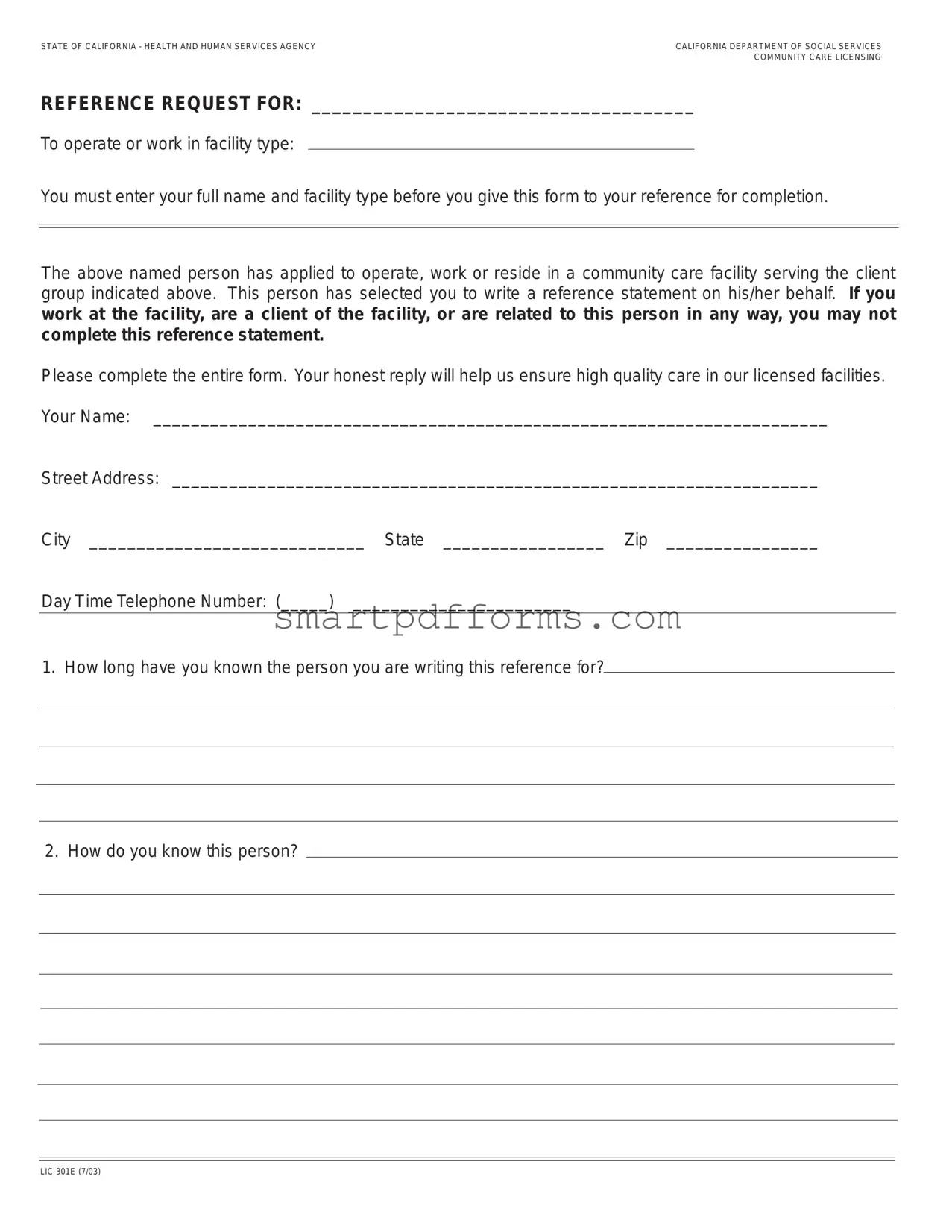
STATE OF CALIFORNIA - HEALTH AND HUMAN SERVICES AGENCY |
CALIFORNIA DEPARTMENT OF SOCIAL SERVICES |
|
COMMUNITY CARE LICENSING |
REFERENCE REQUEST FOR: _____________________________________
To operate or work in facility type:
You must enter your full name and facility type before you give this form to your reference for completion.
The above named person has applied to operate, work or reside in a community care facility serving the client group indicated above. This person has selected you to write a reference statement on his/her behalf. If you work at the facility, are a client of the facility, or are related to this person in any way, you may not complete this reference statement.
Please complete the entire form. Your honest reply will help us ensure high quality care in our licensed facilities. Your Name: _______________________________________________________________________
Street Address: ____________________________________________________________________
City _____________________________ State _________________ Zip ________________
Day Time Telephone Number: (_____) _______________________
1. How long have you known the person you are writing this reference for?
2. How do you know this person?
REFERENCE REQUEST FOR:
3. Please give your opinion of this person’s character.
4.Please describe any interaction you have observed between this person and the client group he/she is requesting to work with. For example: Clients may be children, developmentally disabled children or adults, mentally impaired adults, or elderly.
5.Please add any comments you feel are relevant about this person and his/her desire to work in a community care facility.


